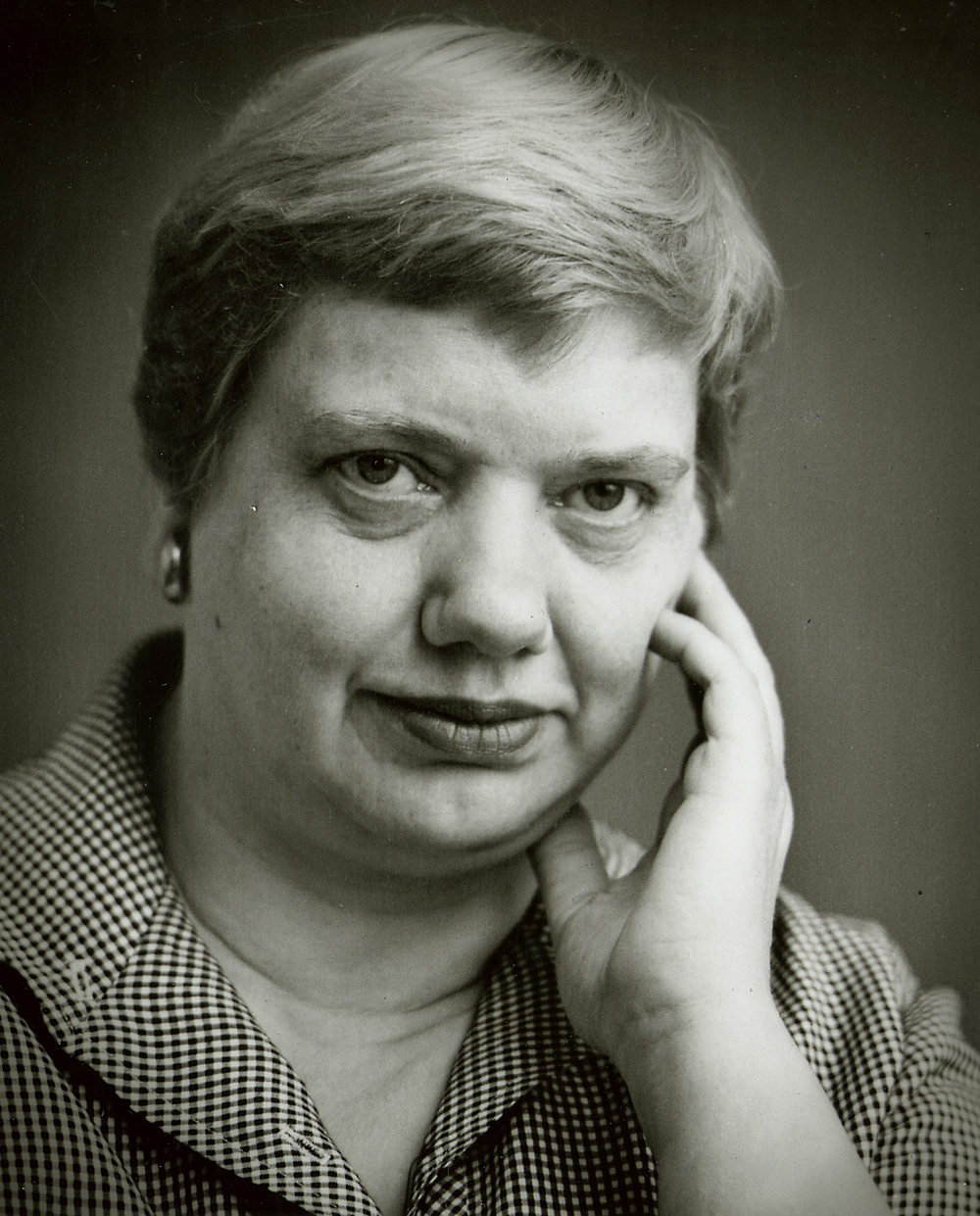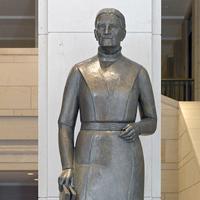More about Evelyn Raymond
Works by Evelyn Raymond

Sr. Contributor
Known as “a bold artist but a shy woman” Evelyn Raymond worked as both a sculptor and a teacher for over sixty years.
In 1928, Raymond won a scholarship to the Minneapolis School of Art; while her tenure there didn’t work out, it led to better things. She was advised by the program’s director that modern art was a passing fad and so she shouldn’t pursue it. This was disappointing as abstract art was Raymond's preferred style, however a staff mandate prohibited instructors from teaching it at the school.
Raymond left the school with her mentor and roughly two dozen other students, and they pooled their low Depression-era funds together to rent a studio and form the Minneapolis Art Student League. She studied and taught there for two years until family troubles pulled her away.
Her mother became ill, so Raymond went home to her family’s dairy farm in Duluth to help out for the next eight years. When she left home again, trying to transition back into the life of a sculptor while the effects of the Great Depression lingered was difficult. After some time, a fellow artist invited her to the Twin Cities for a commission, where she created the sculpture ERG to showcase her skills.
Raymond recalled that after living like a hermit for almost a decade, presenting her work to a large audience was nerve wracking. Nevertheless, she continued with commissions and teaching at the Walker Art Center for decades. Dedicated to bringing art to her community, she helped found the Minnesota Sculpture Society and on one occasion converted a YWCA tennis court into a sculpture garden.
A high point of her career happened around Minnesota’s statehood centennial in 1958, when she won the major commission to create a statue of Maria Sanford for Statuary Hall in the United States Capitol. She spent over half a year on the project, taking painstaking care with the details due to her respect for her subject. There was a sense of kinship as both Raymond and Sanford were pioneering spirits and longtime educators.
At the dedication of her final sculpture, Celebration of Peace, Raymond said “I don’t really need the publicity but, hell, I think I’ve contributed a lot and at 89 you need to give yourself a little credit.”
Sources
- "Evelyn Raymond." Minneapolis College of Art and Design. Accessed January 25, 2021. https://mcad.edu/alumni-profile/evelyn-raymond.
- "Evelyn Raymond." St. Louis Park Historical Society. Accessed January 25, 2021. http://slphistory.org/raymondevelyn/.
- "How the Society Got Started...and Grew." Society of Minnesota Sculptors. Accessed January 25, 2021. https://www.mnsculptors.com/pdf/SMS_HISTORY.pdf.
- Sullivan, Thomas O'. "Evelyn Raymond: A Sculptor's Own Story." Minnesota Historical Society. Accessed January 25, 2021. http://collections.mnhs.org/MNHistoryMagazine/articles/56/ v56i02p085-095.pdf.
Featured Content
Here is what Wikipedia says about Evelyn Raymond

Evelyn Raymond (March 20, 1908 – April 25, 1998) was an American sculptor. Raymond lived in Duluth, Minnesota. In 1928 she received a scholarship to the Minneapolis School of Art.
Biography
Her teacher at the Minneapolis School of Art was Charles S. Raymond, with whom she studied for two years; from 1930 to 1932 she studied painting under Cameron Booth, and in 1932 she went to New York to study at the Art Students League under William Zorach.
She created work for the Federal Art Project during the Great Depression, and taught from 1939 to 1951 at the Walker Art Center, where she eventually became head of the sculpture department. At one point during the Depression she taught sculpture for 25 cents an hour. She also founded the Minnesota Sculpture Society, of which she served for a time as president, during the 1940s.
When in 1958 the Minnesota Statehood Centennial Commission decided to place a sculpture in the National Statuary Hall collection it was Raymond who was chosen to execute the statue; the resulting depiction of Maria Sanford may still be seen in the United States Capitol. The Walker Art Center and the Minnesota Museum of Art are among the museums holding examples of her work, which may also be found in public collections around the state. Raymond exhibited both alone and in group shows throughout her career.
Raymond's papers are currently held by the Minnesota Historical Society.
Check out the full Wikipedia article about Evelyn Raymond











